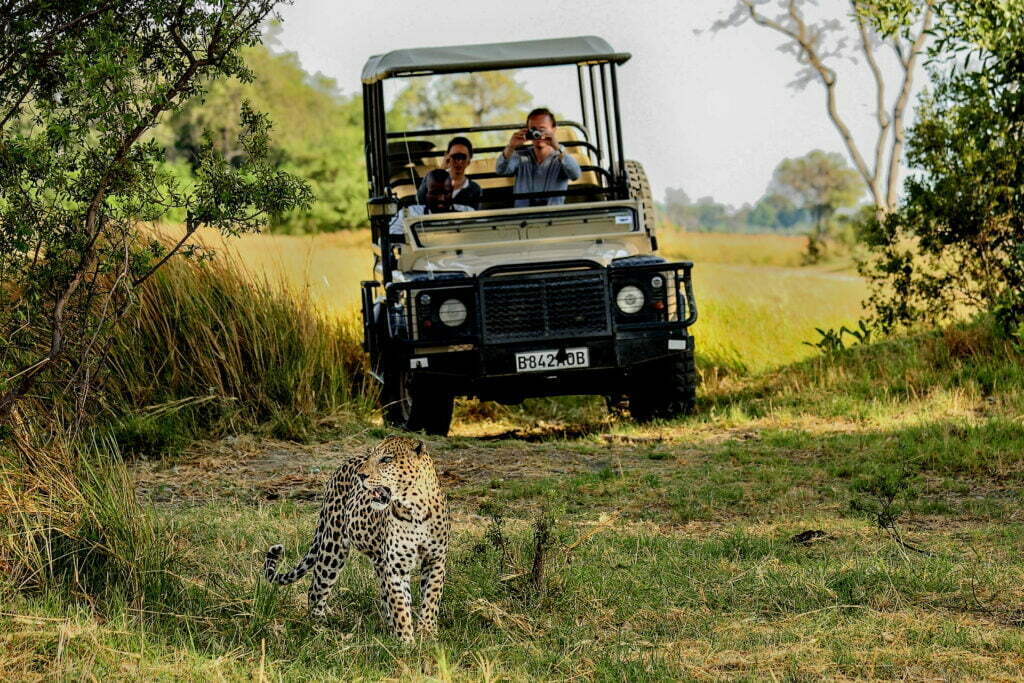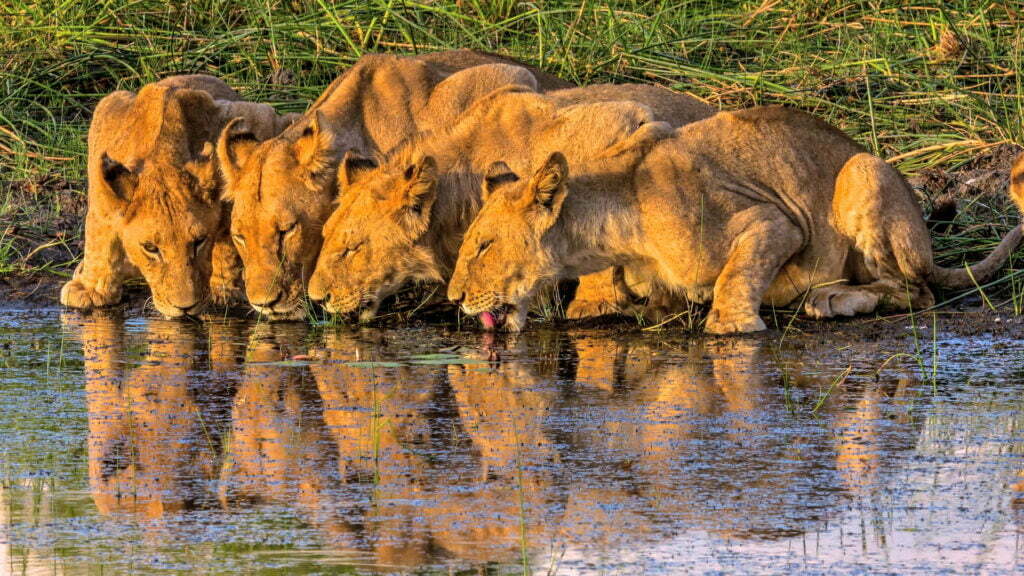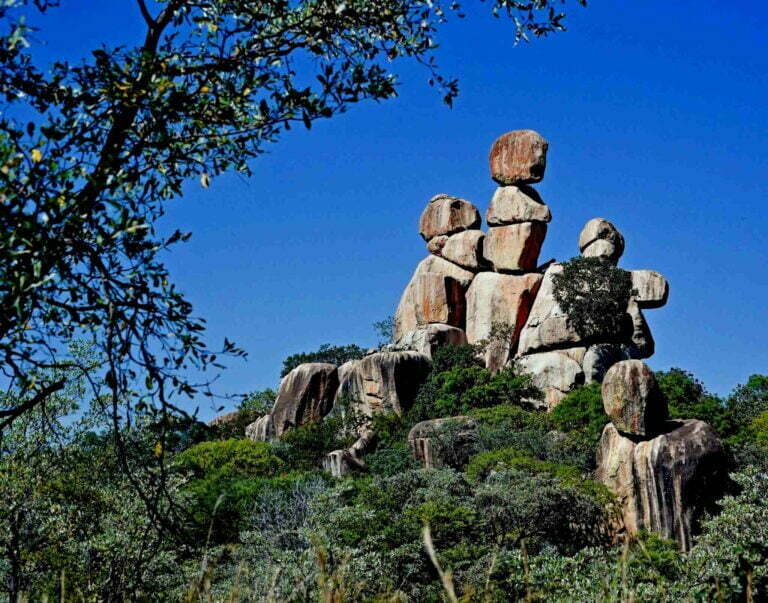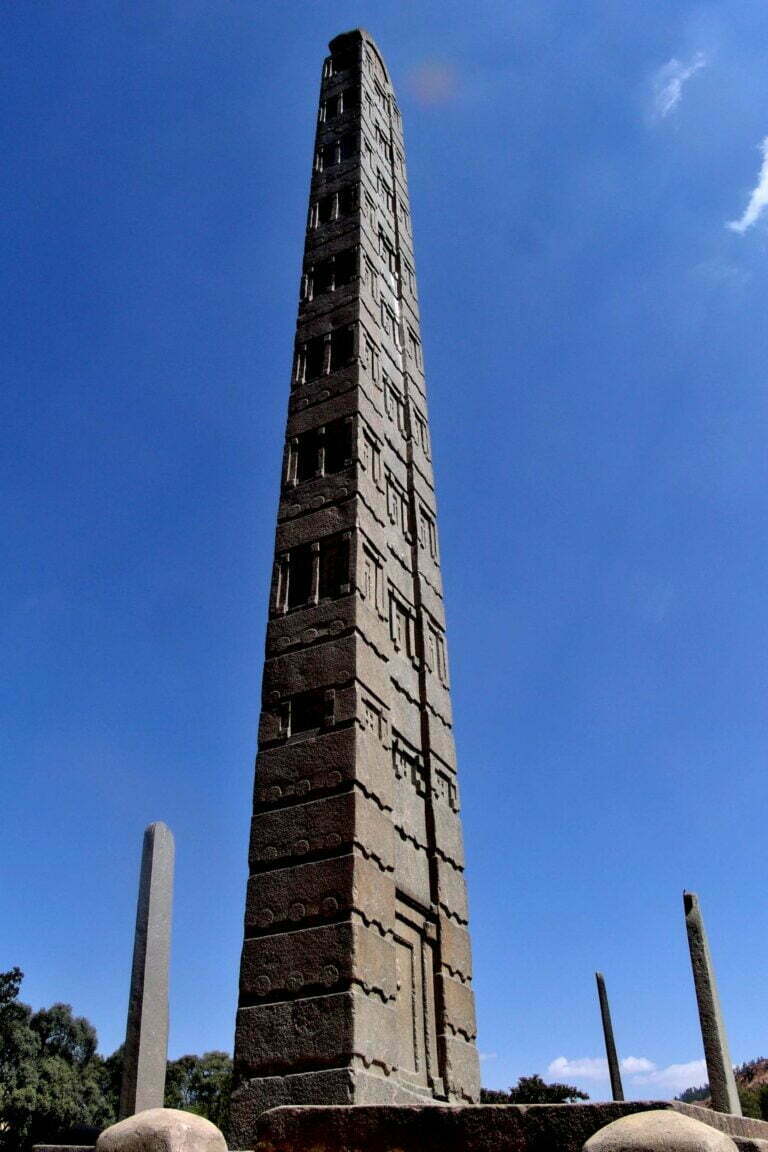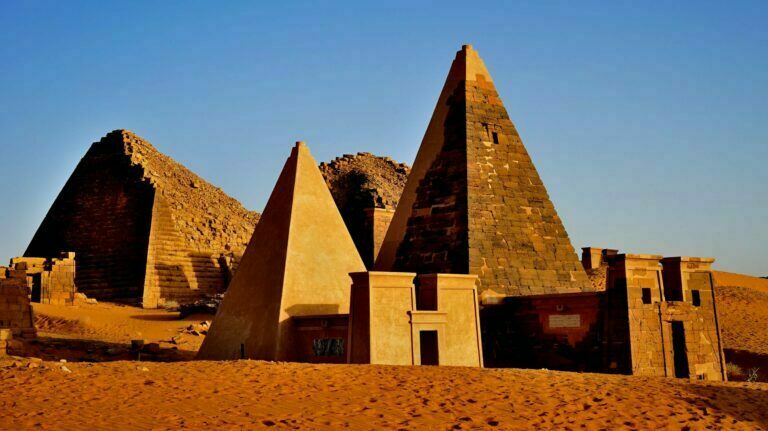Okavango Delta was added to the UNESCO World Heritage List as the thousandth site in 2014. These interesting facts about this part of Botswana, Africa are just the tip of the iceberg. And things will only get better from here on out. Read on and decide for yourself. Some facts about the Okavango Delta that will make you want to go there.
What’s the Okavango Delta
1. A delta is a wetland or swampy area that forms when a river carries a lot of water from one place and dumps it somewhere else. Deltas tend to form in areas that are flat and low. The river that brings water to the area splits into smaller branches that often look like the Greek letter delta (a triangle). Most of the time, the river flows into the sea. In northern Botswana is where the Okavango Delta is.
Where does the water for the Okavango come from
2. The Angolan Highlands’ summer rains (January and February) fill up the Okavango Delta every year. This water flows into the Okavango River and spreads out over the Delta over a period of 4 to 6 months. From June to August, when Botswana’s winter is dry, this flooding is at its worst. During this time, the Delta is three times bigger than when it is wet. Most of these flood waters are eventually soaked up by the forest and evaporate into the dry air of Botswana. And the process starts over again.
What makes the Okavango Delta special
3. There are about 11,000 deltas in the world, but the Okavango Delta is different from all of them. For instance, it’s in the middle of the Kalahari Desert, which isn’t very common. An earthquake about 50,000 years ago caused the Okavango Delta to form here. The earthquake caused 11 trillion liters of water from the Okavango River to flow into this desert, and the rest is history.
4. It’s an inland delta, while most river deltas empty into the ocean. In fact, it is one of the biggest inland deltas that are still around.
5. Deltas usually flow into the ocean, so they are usually in low-lying places. The Okavango Delta, on the other hand, is 980 meters above sea level.
6. This delta is pretty unique because it floods during Botswana’s dry season, when it should be dry.
7. When the Okavango River is at its biggest, it can be seen from space. This could be my favorite fact about the Okavango Delta.
Okavango Delta Animal Facts
8. When the water level in the Delta rises, animals from all over come to live there. During this time, there are more animals in the Okavango Delta than in any other place in Africa. Elephants, hippos, and both black and white rhinos live in the Delta.
Buffalo, wildebeest, giraffes, zebras, warthogs, lechwe, and many types of antelope like sable and kudu are also browsers and grazers. You might even see a sitatunga, which is very rare. In the Okavango Delta, Sitatunga mostly live in swampy places. They are one of the 74 kinds of antelopes in Africa.
Predators aren’t going to pass up this chance, of course. Leopards, cheetahs, brown and spotted hyenas, and lions are all out looking for food. In fact, lions in the Okavango Delta are usually bigger and stronger than any other lions in the world. Part of the reason for this is that lions can eat very well there. There are many different kinds of prey, and everyone has more than enough.
And when lions move through the area, whether they’re hunting or looking for a good place to sleep, they often walk through water. This builds their muscles, which makes them bigger. Big crocodiles live in the water of the Delta, of course. Nile crocodiles in the Okavango can grow to be 6 m long and weigh more than 1000 kg.
There are about 3000 of these lizards living here. Even rare and threatened African Wild Dogs can be found in large numbers in the Okavango Delta. With about 500 animals, this area and the areas around it in northern Botswana have one of the largest populations.
Okavango Delta Botswana Map
Animals in the Okavango Delta
In the Okavango Delta, how many animals live? During floods, this unique ecosystem is home to up to 300,000 animals. During this time of year, over 122 species of mammals and 444 species of birds have been seen here. The area is also home to 33 types of amphibians and 64 types of reptiles. This seems like an unbelievable Okavango Delta fact! Even when the Delta is at its lowest during the wet season, the area has its own wildlife. Even though there aren’t as many animals here when it’s wet, this is still a great place for an Okavango Delta safari.
More Okavango Delta Facts
10. The Delta has more than 150,000 islands, ranging in size from very small to more than 10 km long. Most of them started out as termite mounds that got bigger as river silt built up and plants grew on them.
11. The Moremi Game Reserve, which is on the eastern side of the Okavango Delta, covers almost a third of the area. Many of the safari camps in the Reserve are on Chief’s Island, which is the largest island in the Delta. Chief’s Island is 70 km long and 14 km wide.
It used to be a tribal chief’s private hunting ground. There are some of Botswana’s most luxurious safari lodges here now. The San Bushmen were able to stay in Moremi because it was not a National Park but rather a Reserve. Since about 70,000 years ago, the San have lived in the Okavango Delta.
12. The San are one of five different ethnic groups that live in the Okavango Delta. Each has its own history, language, and culture. Some live by hunting and gathering, while others farm, fish, hunt, herd cattle and goats, and/or gather wild plants for food and medicine.
13. Okavango Delta Lucky fact number 13: The traditional way to get around in these wetlands is in a boat called a mokoro. Usually, the trunks of big trees like African sausage trees or ebonies were used to make these. Now, though, mokoros are made of fiberglass to protect the big trees in the area. Long poles are pushed against the bottom of the river to move them. It may seem simple, but it’s not. Balance is hard, believe me. A popular way to see the Okavango Delta is by going on a mokoro safari. It’s a beautiful, peaceful, and quiet way to watch the animals.
14. The entire Delta covers 6,000 km² at its driest. When the floodwaters from Angola reach it, it grows to about 15,000 km2.
15. The wildlife and ecosystems of Botswana are important to the government. In order to do this, it limits how many camps and tourists can go through this area.
When you should go to the Okavango Delta
16. You can visit the Okavango Delta at any time, but there is a best time. If you want to see wildlife, the dry season in the Delta is the best time. From May to August, seasonal animals are in town, the rainy season is over, and the weather is perfect. Some people, though, like to wait until late June or July to be extra sure that the weather will be dry. This also gives the animals more time to get there and get comfortable.
17. If you want to see birds, though, summer, or the wet season, is the best time. Again, the Okavango is a great place to see birds any time of year, but from November to April, it’s even better. This is when the people who move away for the winter come back.
18. Keep in mind, though, that because it’s the rainy season, you might run into many places that aren’t reachable. From January to March, this is especially true. April is a good time to see birds around here. You will be able to get to more places. Don’t forget to bring your glasses.
19. In short: Facts about the Okavango Delta. The ecosystem of the Okavango Delta is one of the most unique on Earth. If you love animals, want to see the best of Africa, or just want an experience you’ll never forget, come find out some facts. It might be the best trip you’ve ever been on. Happy travels!

